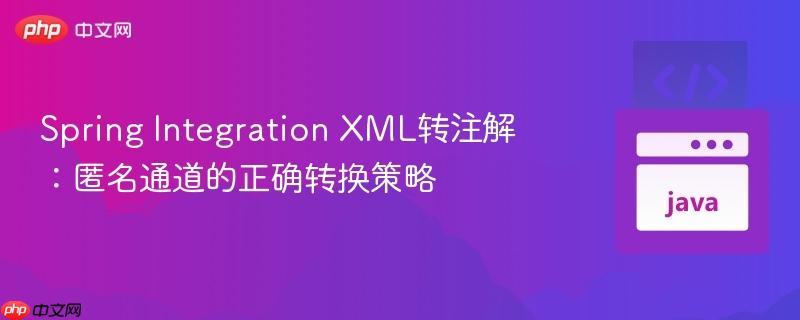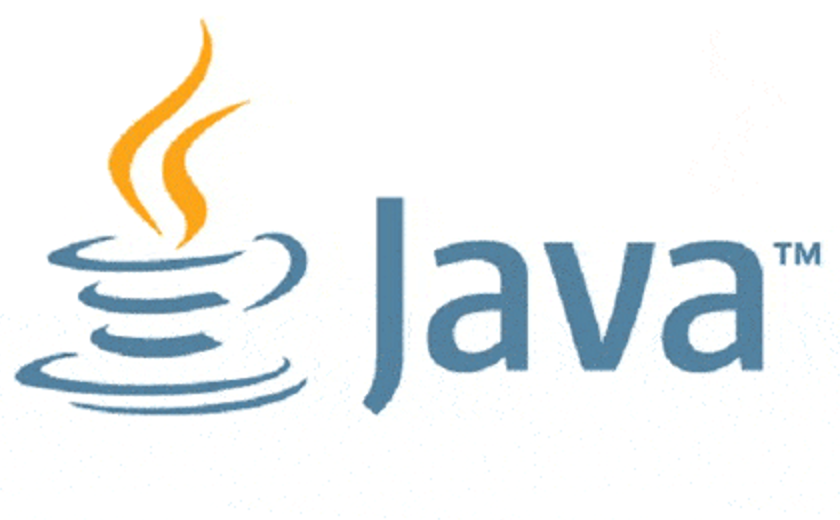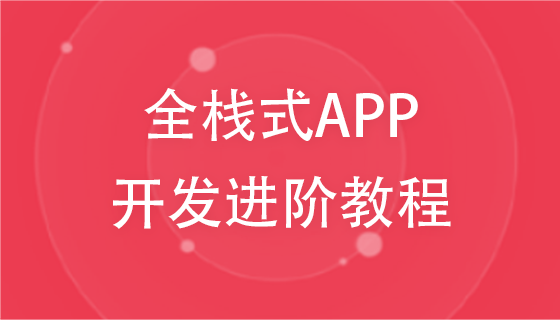
将Spring Integration从XML配置迁移到注解时,处理XML中隐式创建的匿名通道是一个常见挑战。本文将详细阐述如何正确地将这些匿名通道转换为注解配置,重点对比`DirectChannel`和`QueueChannel`的选择,并提供两种主要的解决方案:显式定义`DirectChannel`作为Spring Bean,以及在特定场景下利用组件的子通道命名约定。
在Spring Integration的XML配置中,我们经常会看到如下定义:
<int:transformer ref="myTransformer" input-channel="in" output-channel="out">
<!-- ... transformer details ... -->
</int:transformer>如果output-channel="out"中引用的out通道没有在XML配置的其他地方显式定义(例如
当我们将上述XML配置转换为注解时,例如:
@Transformer(inputChannel = "in", outputChannel = "out")
public String transform(String payload) {
// ... transformation logic ...
return payload.toUpperCase();
}直接使用outputChannel = "out"通常会导致APPLICATION FAILED TO START错误,并提示“A component required a bean named 'out' that could not be found.”。这是因为在注解驱动的Spring应用中,所有被引用的通道(除非是框架内部特定组件自动创建的)都必须作为Spring Bean显式定义。框架不再隐式地为未定义的通道创建默认实现。
对于大多数从XML隐式通道转换而来的场景,最直接且功能等价的解决方案是显式地将该通道定义为一个Spring Bean,并且其类型应为DirectChannel。
为什么是 DirectChannel 而不是 QueueChannel?
显式定义 DirectChannel 的示例代码:
import org.springframework.context.annotation.Bean;
import org.springframework.context.annotation.Configuration;
import org.springframework.integration.channel.MessageChannel;
import org.springframework.integration.dsl.MessageChannels;
import org.springframework.integration.annotation.Transformer;
@Configuration
public class IntegrationConfig {
// 定义转换器
@Transformer(inputChannel = "in", outputChannel = "out")
public String myTransformer(String payload) {
System.out.println("Transforming: " + payload);
return payload.toUpperCase();
}
// 显式定义 'out' 通道,作为 DirectChannel
@Bean
public MessageChannel out() {
return MessageChannels.direct("out").get();
}
// 假设 'in' 通道也需要定义
@Bean
public MessageChannel in() {
return MessageChannels.direct("in").get();
}
// ... 其他Spring Integration组件 ...
}通过上述配置,out通道被明确定义为名为out的DirectChannel bean,解决了“bean not found”的问题,并保持了与XML配置相同(同步、点对点)的消息传递语义。
虽然DirectChannel是XML隐式通道的默认等价物,但在某些情况下,你可能确实需要QueueChannel。
何时使用 QueueChannel?
如果你明确需要这些特性,那么使用QueueChannel是合适的,但请注意这改变了原有的同步消息流。
定义 QueueChannel 的示例:
import org.springframework.context.annotation.Bean;
import org.springframework.context.annotation.Configuration;
import org.springframework.integration.channel.MessageChannel;
import org.springframework.integration.dsl.MessageChannels;
@Configuration
public class IntegrationConfig {
@Bean
public MessageChannel myQueueChannel() {
// 创建一个无界队列通道
return MessageChannels.queue("myQueueChannel").get();
// 或者创建一个有界队列通道
// return MessageChannels.queue("myQueueChannel", 10).get();
}
}在某些特定的Spring Integration组件(如Gateway、Service Activator等)中,如果将outputChannel指向一个已存在的组件Bean,该组件可能会暴露特定的子通道(例如.input或.output)来接收或发送消息。
例如,如果out实际上是一个Spring Bean(比如一个Service Activator),并且你希望将消息发送到它的默认输入通道,有时可以使用如下方式:
@Transformer(inputChannel = "in", outputChannel = "out.input")
public String myTransformer(String payload) {
// ...
return payload.toUpperCase();
}这里out不再是匿名的通道名,而是指向一个名为out的Spring Bean,.input则表示该Bean内部暴露的输入通道。这是一种更高级的用法,通常用于将消息路由到特定组件的特定入口点,而不是为匿名通道提供定义。对于将XML中的匿名通道转换为注解,这种方法通常不是首选或直接等价的。
将Spring Integration从XML迁移到注解时,处理隐式通道的关键在于理解注解配置的显式要求。
通过遵循这些原则,你可以平稳地将Spring Integration的XML配置迁移到更加现代化和类型安全的注解配置。
以上就是Spring Integration XML转注解:匿名通道的正确转换策略的详细内容,更多请关注php中文网其它相关文章!

每个人都需要一台速度更快、更稳定的 PC。随着时间的推移,垃圾文件、旧注册表数据和不必要的后台进程会占用资源并降低性能。幸运的是,许多工具可以让 Windows 保持平稳运行。




Copyright 2014-2025 https://www.php.cn/ All Rights Reserved | php.cn | 湘ICP备2023035733号